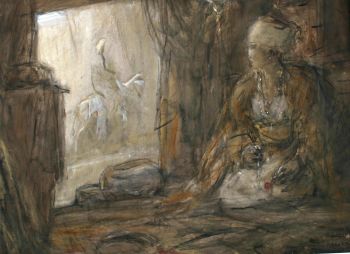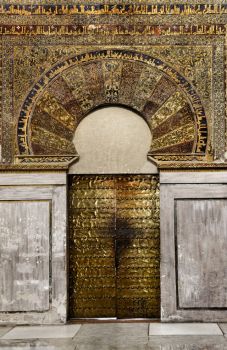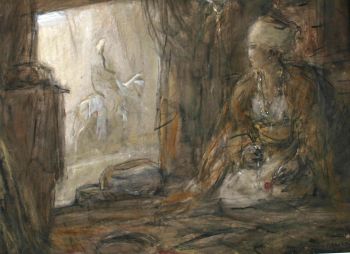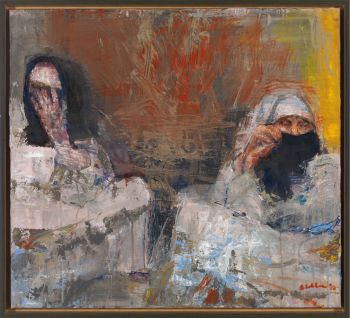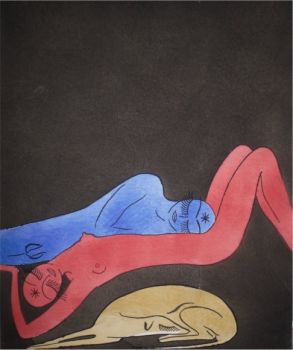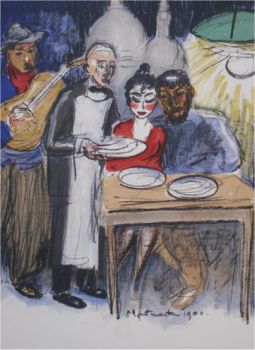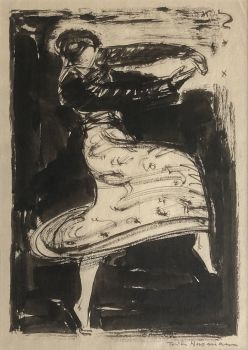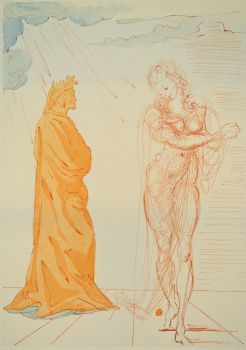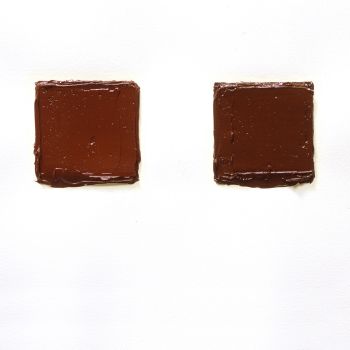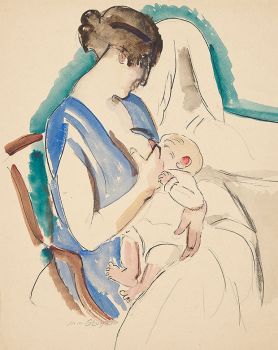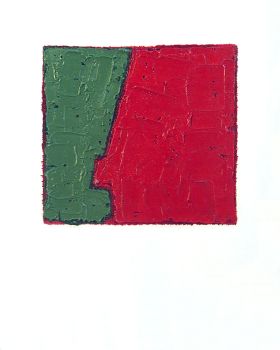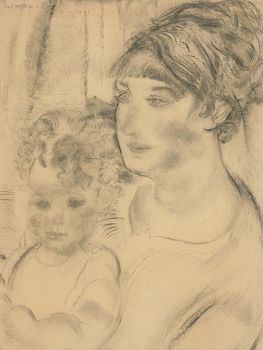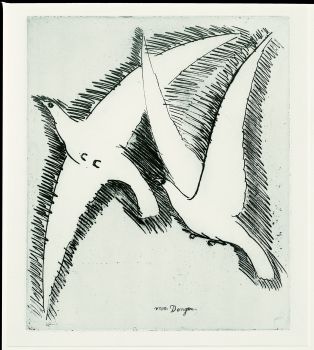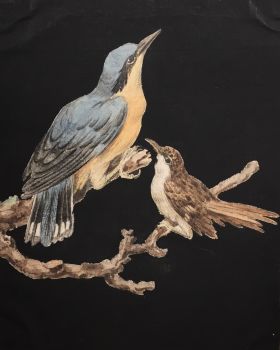First combined edition of Symmachus's letters together with Mehmed II's fictitious letters 19
Quintus Aurelius Symmachus
Papier
Actuellement indisponible via Gallerease
- Sur l'oeuvre d'artEpistolae familiares.
Including: ZACCHIA, Laudivius. … in epistolas Turci magni traductio.
(Colophon: Strassburg, Johann Schott for Georg Übelin, 8 August 1510). 4to. 19th-century half calf, tiger marbled sides, tiger marbled paste-downs (rebacked, with original backstrip laid down).
First dated edition of Epistolae familiares containing 343 letters by the Roman statesman and orator Quintus Aurelius Symmachus (ca. 345-402), addressed to a wide circle of relations, friends, and acquaintances and all written in a refined style. Although many of them are only short notes, together they provide a fascinating window into the late Roman senatorial aristocracy. The priority of the editions is uncertain, but what is often considered the first was published in Venice between 1503 and 1513.
The main text is followed by a spurious collection of letters from and to the Ottoman Sultan Mehmed II (1432-1481), but actually written by the humanist Laudivius Zacchia. "The so-called Epistolae magni Turci begin with a letter from Mehmed … to Zancassanus, 'King of Persia'. As in the rest of the collection, the exchange follows a set pattern: angry, menacing boasts from the sultan, followed by a reply from the threatened party, which parries the worst of the bluster and thus rhetorically disarms the Turk" (Meserve). The book, first published in 1473, was a success and reprinted numerous times well into the 17th-century, undoubtedly because many Europeans feared the advancing Ottoman Empire (the Battle of Mohács was to give the Ottomans a decisive victory in Hungray in 1526).
The present edition is the first combined edition of the two works. Another edition including both works was published only two months later by another Strassburg publisher Johann Grüninger on 9 October 1510. A line for line reprint of the present edition was published in 1511.
With some underscoring and a few annotations in the margins. Paper slightly browned with a few occasional spots. Binding rebacked. Good copy.
Brunet V, col. 612; Graesse VI, p. 538; VD 16, S10390 (8 copies); cf. Meserve, Empires of Islam in Renaissance historical thought (2009), p. 228; not in Adams. - Sur l'artisteQuintus Aurelius Symmachus (vers 345 - 402) a fait ses études en Gaule. C'était un homme d'État romain aristocrate très éloquent. Symmaque fut proconsul (gouverneur) d'Afrique en 373, préfet urbain de Rome en 384 et 385, et consul en 391. Il chercha sans succès à préserver la religion traditionnelle de Rome. Il a été réfuté par Ambrose, évêque de Milan, dans la célèbre question de Victoria-autel. (Un certain nombre de sénateurs voulaient que l'autel de la déesse Victoria - enlevé par l'empereur Gratien - revienne au Sénat). Beaucoup de ses écrits ont survécu: neuf livres de lettres, un recueil de Relationes (dépêches officielles), trois panégyriques (éloges). Symmachus a également engagé la publication de l’ouvrage historique de Tite-Live Ab urbe condita (De la fondation de la ville), les livres I-X.
Artwork details
Catégorie
Sujet
Matériel & technique
Related artworks
Tilmanus Nicolaus Maastricht
Missale Romanum avec montures en argent hollandais1788 - 1792
Prix sur demandeJacob J. Roosjen SRI
Engelbert Kaempfer
LIVRE ENGELBERT KAEMPFER1651 - 1716
Prix sur demandeZebregs & Röell - Fine Art - Antiques
Antonie Derkinderen
Memory book Exhibition of Dutch Painting1892
Prix sur demandeKunsthandel Pygmalion
LAWRENCE WEINER
"SKIMMING THE WATER [MENAGE A QUATRE]" Signed book plus small artwork2010 - 2014
Prix sur demandeGallerease Selected
Hermann Nitsch
"UNDER MY SKIN" Signed book incl. small artwork and DVD in a matching box2010 - 2014
Prix sur demandeGallerease Selected
Engelbert Kaempfer
LIVRE ENGELBERT KAEMPFER1651 - 1716
Prix sur demandeZebregs & Röell - Fine Art - Antiques
Yoko Ono
YOKO ONO: "ARISING" SIGNED BOOK PLUS SMALL ARTWORK 2010 - 2014
Prix sur demandeGallerease Selected
1 - 4 / 22Elisabeth Treskow
Lapis lazuli afghan incrusté d'or sur un support en argent1950 - 1960
Prix sur demandeJacob J. Roosjen SRI
Artiste Inconnu
GRANDE PEINTURE INDIENNE IMPORTANTE ET RARE `` STYLE D'ENTREPRISE '' SUR IVOIRE REPRÉSENTANT UN DÉFI1850 - 1900
Prix sur demandeZebregs & Röell - Fine Art - Antiques
 Sélectionné par
Sélectionné parDanny Bree
Elisabeth Treskow
Lapis lazuli afghan incrusté d'or sur un support en argent1950 - 1960
Prix sur demandeJacob J. Roosjen SRI
1 - 4 / 24Rene Rietmeyer
"Germany, Saarland, April 2001"2001
Prix sur demandeEuropean Cultural Centre Collection
1 - 4 / 24













!["SKIMMING THE WATER [MENAGE A QUATRE]" Signed book plus small artwork by LAWRENCE WEINER](https://media-2.gallerease.com/images/442bfd5f-fc31-4e18-a2fa-ee0c08eade64/350x350/skimming-the-water-menage-a-quatre-signed-book-plus-small-artwork.jpg)












